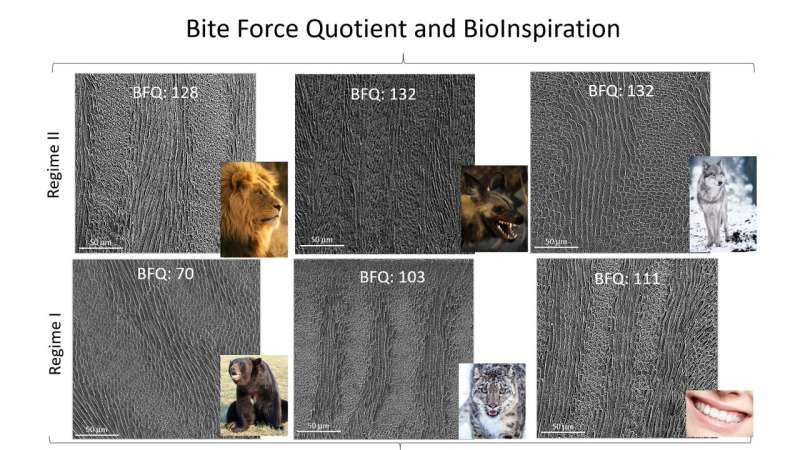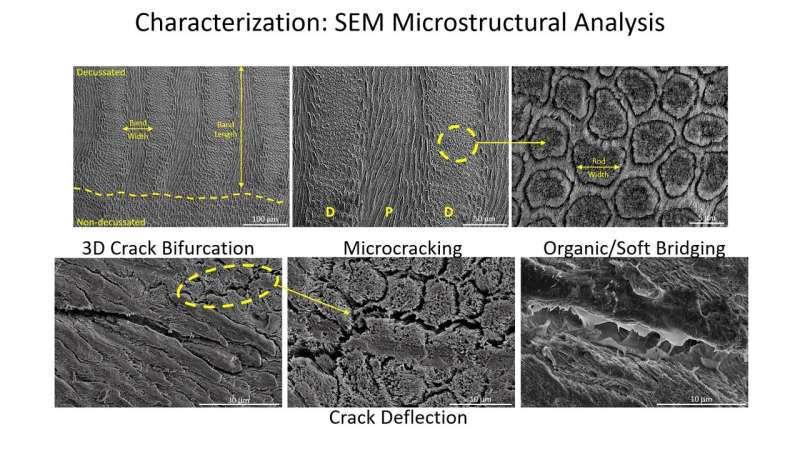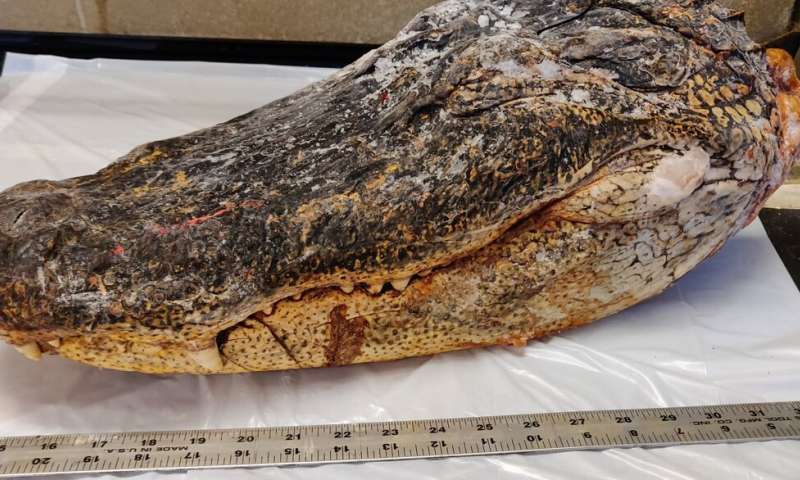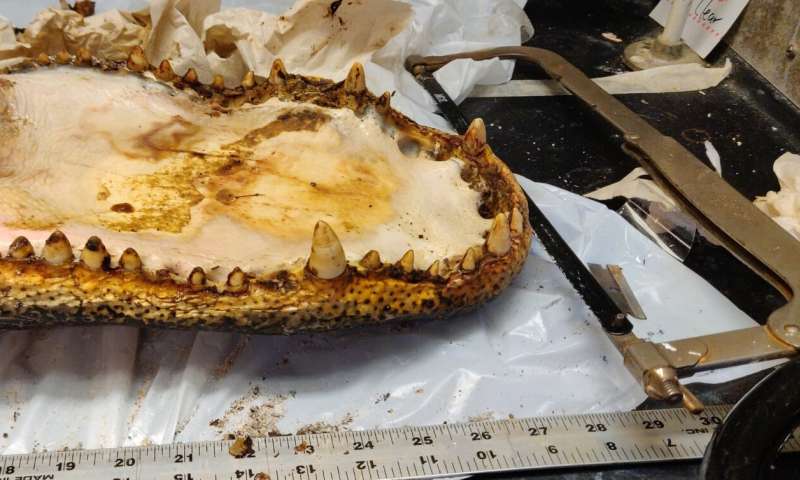Cracking under pressure: What teeth can teach us about modern materials

As unlikely as it sounds, a simple tooth could play a significant role in the world's clean energy future.
Because dental enamel has unique properties that make it both rigid and resilient, it has a range of valuable applications beyond biting and chewing. No synthetic materials possess these vital innate qualities to the same degree. Creating materials with some of those qualities could have a significant impact on both clean energy and national security.
"Many biological tissues have interesting and distinct properties, but we're specifically exploring enamel because of its unique combination of strength and toughness," Idaho National Laboratory intern and DOE Office of Science Graduate fellow Carli Marsico said.
Office of Science awarded this prestigious fellowship so Marsico could support INL on research critical to both national security and clean energy, two key mission areas for the laboratory.
Marsico's interest in exploring methods to toughen monolithic ceramics originated in their application as body armor for soldiers. Before her internship at INL, she had been curious about the unique properties of biological tissues and sought to understand how they might be useful in the defense sector. However, this is far from the only game-changing outcome for this research.
The INL research team is also interested in how tougher ceramics could reduce costs across the clean energy sector. Because these ceramics are ideal for high-temperature environments, they are often used for environmental barrier coatings as well as other turbine parts. Currently, these turbine parts must be "overdesigned" with reinforcements, because of the ceramics' brittle structure.

Tough and strong: The qualities of a tooth
In the materials science field, strength describes a material's rigidity and ability to resist deformation. Toughness refers to its ability to withstand catastrophic failures, such as cracking or breaking under pressure.
"The synthetic material most similar to dental enamel is a monolithic ceramic, which refers to any ceramics made from only one material," Marsico said. "They are reliable for use in high temperature applications, which make them valuable in the automotive, electrical and electronics, power, and defense industries."
Monolithic ceramics are strong and easily resist deformation, but they are also brittle rather than tough. If dropped, they will shatter easily.
Inside the tooth: Leveraging state-of-the-art imaging techniques
To mimic the strength and toughness of dental enamel, and ultimately apply it to monolithic ceramics, researchers must understand how enamel possesses these properties. This understanding requires proper imaging capabilities. This has been the cornerstone of Marsico's research since she began working with INL's Modeling and Simulation researcher Donna Guillen.
-

Credit: Idaho National Laboratory -

Alligator enamel being prepared for imaging. Credit: Idaho National Laboratory
"The structure of dental enamel does not lend itself well to the current three-dimensional imaging methods that we have," Marsico said. "Our research proposal establishes a way around that—essentially, we're taking two-dimensional images of dental enamel and transferring them into three-dimensional volumes."
To confidently move forward with this proposed methodology, Marsico and the INL team needed to validate it—in this case, through a synchrotron experiment. Synchrotrons are large machines that accelerate electrons close to the speed of light, causing them to deflect through magnetic fields and create an extremely bright light. That bright light penetrates the dental enamel sample, passing through it completely and, similar to X-ray imaging, creating an image of the enamel's interior.
In 2021, the team used the same synchrotron process for the experiment with animal teeth. Looking at animal teeth allows Marsico and Guillen to understand the unique roles and arrangements of some of the enamel features that interest them most. Then, they will form better computational models to reconstruct these features and apply them to synthetic materials.
"Different animals' dental enamel is optimized for specific functions," Marsico said. "For example, an herbivore's enamel is designed for slow grinding, whereas a carnivore's enamel might be more conducive to biting and tearing and might also be more shock resistant."
Where do we go from here? Clean energy and defense applications
"Once we understand what makes dental enamel so tough, we can hopefully mimic those properties when engineering monolithic ceramics. This will allow for lighter weight, lower cost manufacturing of items such as turbine parts and body armor, thereby strengthening both our nation's security and clean energy future," Marsico said.
Provided by Idaho National Laboratory





















